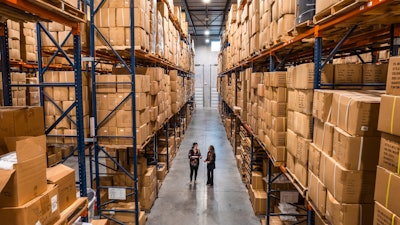
The past few years have redefined the world and thrown unexpected challenges at distributors — the pandemic, supply chain disruptions, labor shortages, inflation and more. But the good news is that every challenge, though difficult and probably unnerving, is also an opportunity to build a more dynamic, agile, resilient business. It’s a chance to prepare for long-term success.
As we move into 2024, there are a few important ways distribution businesses can navigate disruption, seize opportunities and excel in the future, when today’s headlines are in tomorrow’s history books.
Refining the Omnichannel Experience and Virtual Distribution
Before the pandemic lockdowns of 2020, providing digital transaction options was just considered a nice feature. Now, it is essential. Virtual distribution — selling digital products or selling physical products through virtual channels — is here to stay.
Customer and supplier expectations have also rapidly changed. Customers expect their interactions with a business to be smooth, straightforward, and all but instantaneous, and they expect to enjoy the same experience no matter where the customer journey takes place — online, by phone, via an app, or in a physical location. That is, they want a high-quality omnichannel experience. Suppliers expect the same level of service, and even people representing businesses in a B2B model expect the smooth experience they would have when shopping in their personal lives.
For wholesale distribution businesses that buy and sell physical goods, combining virtual and traditional distribution methods with a high-quality omnichannel customer experience is a promising, balanced way forward. This approach, especially when coupled with the right technology, like a robust e-commerce software system, provides the freedom to interact with different customers and suppliers in different ways, according to their preferences. It creates a “best-of-both-worlds” reality that benefits everyone involved.
Integrating Workflows
The distribution industry is increasingly data-driven, and businesses must prioritize company-wide connection and interdepartmental data exchange. This will be especially important for 2024, given the rapidly changing dynamics of international events we’ve already seen in the past three years.
When teams are not connected, when data is siloed in applications that can’t communicate with each other, and when team members can never be sure if the data they’re using is accurate and replicated across departments, then there’s a big problem. Such disconnected workflows waste critical resources and cause increased errors and downtime.
But when workflows are integrated through business management technologies, companywide data can be shared automatically and updated in real time. This enhances information visibility and business intelligence, while helping leaders make more informed decisions.
Embracing Data Analytics
Distributors can now track an unprecedented amount of data — interactions with customers, conditions of shipments and products, changing market variables, regulation revisions, and so much more. But this data is only valuable when it can be analyzed, interpreted and applied to future-focused decision-making.
When distributors apply technology to unleash the power of data analytics across their organizations, they can discover insights that are not only enlightening but also truly actionable for teams, departments and business leaders.
Staying Local, Growing Globally
While the past few years have shown what unique demands and disruptions can come to international businesses, they have also shown how important globalization is for diversification, networking and seizing business opportunities in new markets. For distributors, embracing both local and global market opportunities is a strong path forward.
Maintaining a local focus provides a solid base of geographically close customers and suppliers who are loyal to the business. This stability is important for keeping operations running smoothly despite global uncertainty. It’s a way to insulate operations from overpowering winds of change. At the same time, remaining connected to the international economy is just as crucial. Broadening the customer and supplier base means that companies can anticipate disruption and plan accordingly to minimize business impact.
Tradition and Technology
No matter what changes today’s world has brought or will bring in 2024, the future of distribution depends on what it has always depended on: the customer. A Deloitte analysis puts it this way:
“Distributors of the future should…understand that effectively engaging customers demands true innovation in executing the value chain. Traditional approaches to inventory, logistics, pricing, rebates and network can be reimagined through the application of advanced analytics and technology innovations.”
Now is the time for distributors to reimagine tradition, turn challenges into opportunities, build innovations, and prepare for a future of sustained success.
James Mallory is senior product marketing manager, manufacturing and distribution at Acumatica.






















